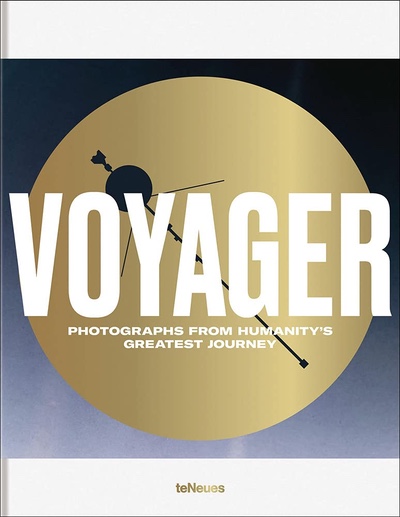Review: Voyager: Photographs from Humanity’s Greatest Journeyby Jeff Foust
|
| “A beautifully crafted photography book. That was our simple intention from the start,” the authors write near the end of the book. |
The documentary does briefly look back at the history of the missions, including its flybys of Jupiter, Saturn, Uranus, and Neptune. The scenes are just fleeting glimpses of Voyager’s storied past, though, as the film focuses on the current state of the spacecraft and its handful of handlers. To appreciate why those spacecraft are so revered decades later, turn to a book like Voyager: Photographs from Humanity’s Greatest Journey.
The book is not a detailed history of Voyager. As its subtitle suggests, the focus is on imagery from the two spacecraft from their journeys through the solar system. “A beautifully crafted photography book. That was our simple intention from the start,” the authors write near the end of the book. It includes nearly 200 images from the Voyagers, intended to sample that the spacecraft saw of those planets and their moons and rings, printed in a large-format book.
The authors did more than simply raid the archives for previously published photos. They went back to the original images and reprocessed them with new software and “a little bit of AI” to produce new and improved versions. They do not go into much detail about how those images were reprocessed, but the results, seen in a few before-and-after comparisons, are beautiful on the printed page.
The book is not all pictures. The authors provide a history of the Voyager missions and describe the scientific discoveries those spacecraft made at each world, as well as provide some other background on the mission and its famous Golden Record. Those passages don’t provide any new insights but do provide some explanation and context for the images that are the heart of the book.
The book includes an essay by Garry Hunt, one of the members of the Voyager imaging team, discussing the challenges and joys of working on the mission. Challenges from operating a distant spacecraft and figuring out what to observe and how; joys from being among the first to get glimpses of places never before seen by humans. “This acceleration as we were approaching, and the quick accumulation of incoming data, became a thrilling experience,” he writes, likening it to drinking out of a firehose: “you were trying to take a little sip, and this torrent of images is coming out.”
Voyager’s imaging days are long behind it, its cameras inactive for decades as the spacecraft head into interstellar space. But a book like this helps you recall, or learn, why the spacecraft are treated with reverence today as they send back other data in their twilight years, their legacy in solar system exploration as secure as ever.
Note: we are using a new commenting system, which may require you to create a new account.
